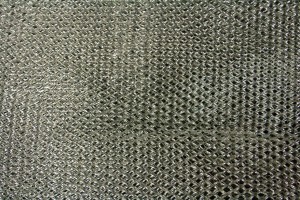Reclaim Industrial Filters in an Ultrasonic Cleaner
Google industrial filters and you’ll get about 12.5 million results. Narrow it down to industrial metal mesh filters and the count is just over 1 million. The point: industrial filters are a big business to trap and hold airborne particles such as dust and grease. Other filters are used to strain impurities from water and chemicals. As with your air conditioner filters and your automobile fuel and oil filters particles build up, flow becomes restricted, and eventually filters must be changed.
Frequent filter replacement represents an expense that can be reduced by reclaiming industrial filters in a sonic cleaner. Reclaiming becomes increasingly attractive as replacement cycles shorten or when filters are expensive. Another benefit of reclaiming is that fewer filters wind up in a landfill.
Why Ultrasonic Filter Cleaning Works Best
High-pressure jets of hot water may be used to remove grease and other contaminants from certain types of filters such as found over commercial ranges. Mesh filters, on the other hand, whether of metal or plastic, can be damaged when cleaned in this way or when subjected to manual scrubbing. The same risk of damage applies to oddly shaped filters such as tubes, screens and sieves. In contrast, sonic cleaning action is safe to use for any type of filter that can be immersed in a biodegradable ultrasonic cleaning solution.
Generator-powered ultrasonic transducers bonded to cleaning tanks are excited to ultrasonic frequencies such as 37 kHz. This causes the formation of billions of minute bubbles that implode violently upon contact with immersed filter elements. The implosion is so fast that there is no damage to filter fibers. Because the bubbles are so small they are able to penetrate the labyrinthine passages between the mesh to loosen and carry away contaminants impossible to reach manually or with a pressure wash. Indeed, for certain types of filters pressure washing may drive contaminants further into the mesh.
Selecting an Ultrasonic Filter Cleaner
The size of filters being cleaned governs the size of the ultrasonic filter cleaning equipment. Fortunately there is a broad selection of equipment from which to choose. Cleaning tank size should be such that the entire filter is immersed in the cleaning solution. Benchtop units are available in several capacities for smaller filters whereas floor-mounted industrial units are a better choice for large filters or for companies that make a business of reclaiming industrial filters. Certain industrial ultrasonic cleaners units are equipped with weirs, spray bars and their own filtering systems to extend the life of the cleaning solution formulation (see below).
The cleaning solution formula is selected based on the properties of the filters being cleaned and contaminants being removed. Formulas are broadly classified as mildly alkaline, neutral and mildly acidic. An example is elma tec clean S1, a mildly acidic concentrate to remove mineral deposits from non-ferrous and light metals, stainless steel and plastics. This is diluted to 1 to 5% with water and used at approximately 50⁰C. A candidate to remove oils and similar contaminants from metals and plastics is alkaline elma tec clean A4 diluted to 2 to 5% with water and used at 60 to 70⁰C.
Cleaning Cycles for Industrial Filters
Cleaning cycles can be as brief as 2 minutes but will be developed with experience and depend on the ultrasonic equipment used, the filters being cleaned and contaminants being removed.
Complete ultrasonic cleaner operating instructions are provided with the equipment. In general, however, the process begins with cleaning bath preparation. Here are key points:
- Add water to the ultrasonic cleaner tank until it is about half full, add the correct amount of cleaning solution concentrate then continue filling the tank. Mix this fresh cleaning solution and degas it to drive off trapped air. This is accomplished by operating the ultrasound for a period of time and/or activating the degas mode if the unit is so equipped.
- When you are ready to clean set the equipment thermostat to the recommended cleaning temperature. Some units will auto-start when the temperature is reached. Set the timer as recommended by the cleaning solution instructions.
- Small filters can be cleaned in mesh baskets; large filters can be lowered into the cleaning solution in such a way they do not contact the tank sides or bottom. Note that raising and lowering the filters in the solution helps flush out loosened contaminants.
- At the end of the cycle remove the filters and allow them to drain. Rinse, inspect, and allow them to dry.
Maintain the cleaning solution by skimming off and setting aside contaminants that float to the surface. As noted above some industrial units are equipped with skimmers and filters that perform this function. Eventually, however, the solution will lose its effectiveness. Drain the tank and dispose of the spent solution and collected contaminants in a locally approved manner.
Clean the tank per the operating instructions. You’re now ready to prepare a new batch of solution.
In Conclusion
Investing in an ultrasonic cleaner to reclaim industrial filters may be a smart step if filter replacement costs are high. Do an analysis to find out when the investment will pay off. For help contact the ultrasonic cleaning professionals at Tovatech for advice on equipment and cleaning solution selection based on your operations and requirements. We also invite you to download our guide to 10 critical factors in selecting ultrasonic cleaners.

